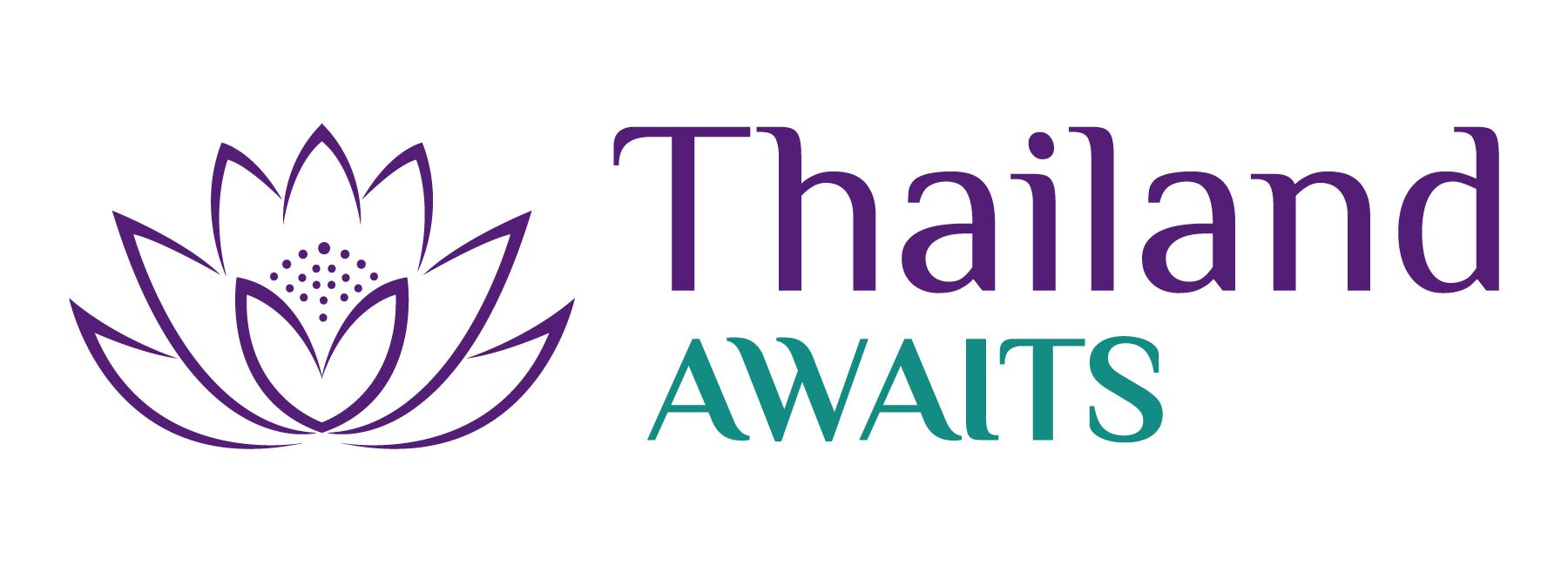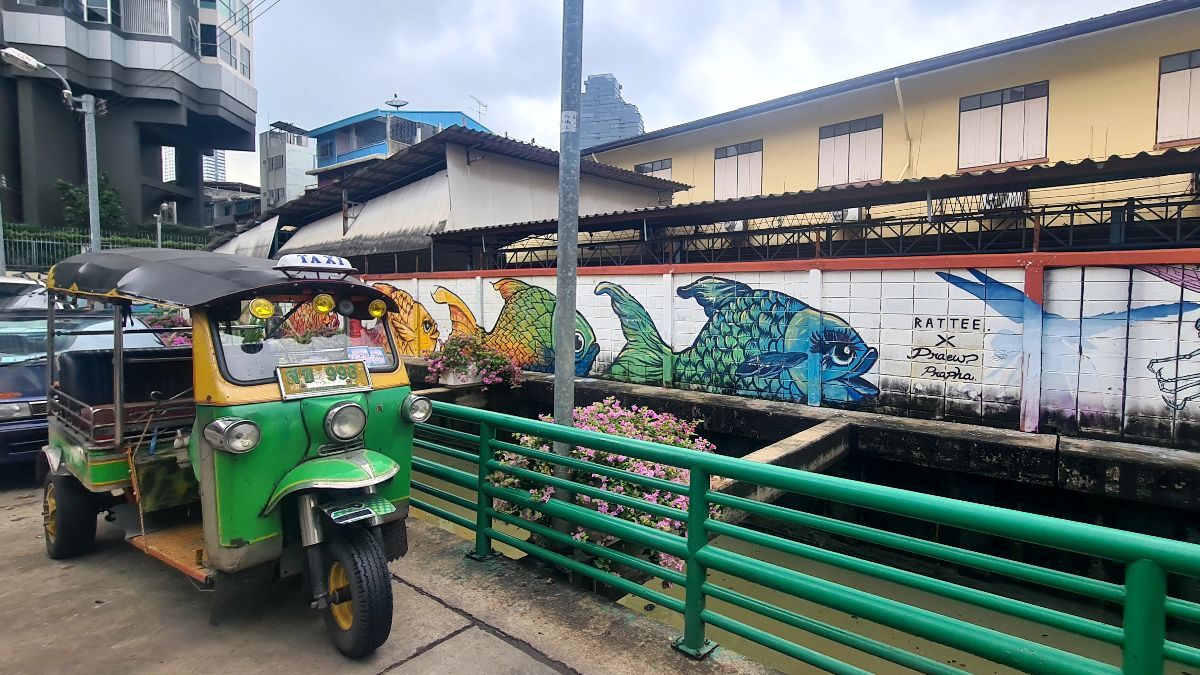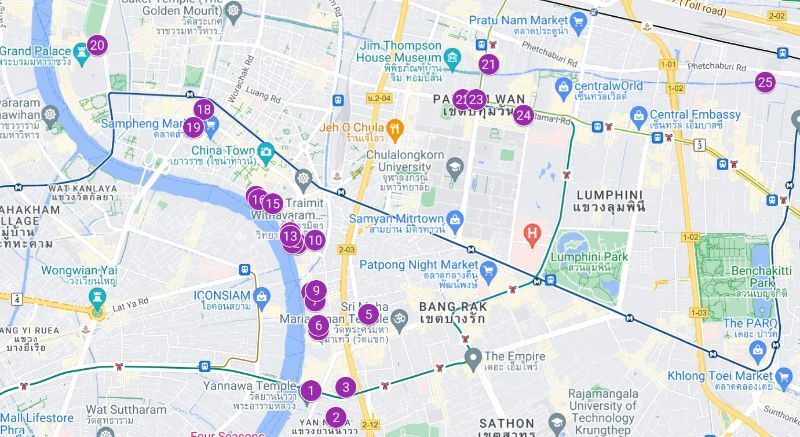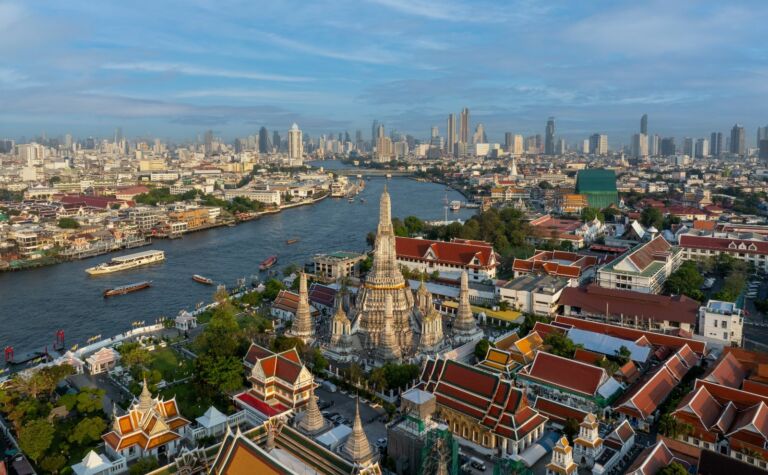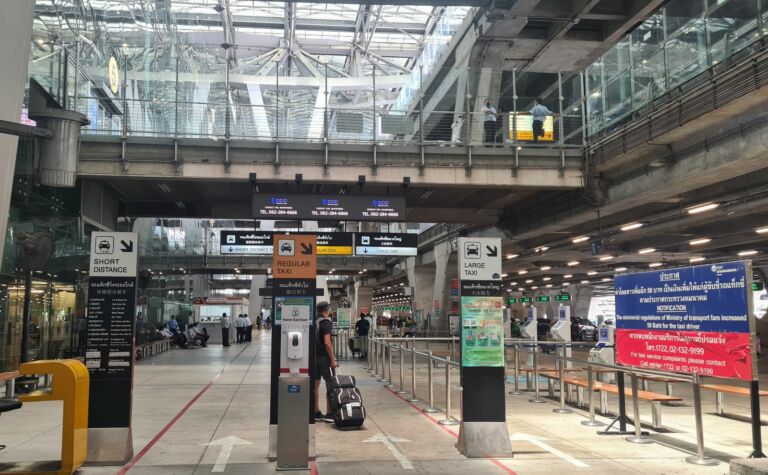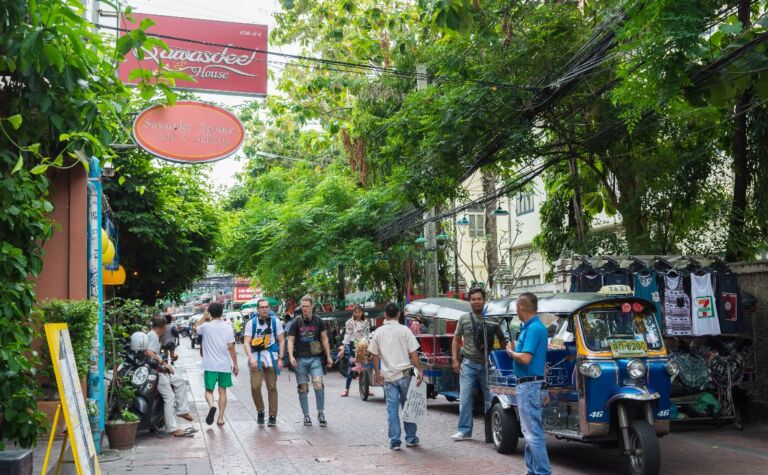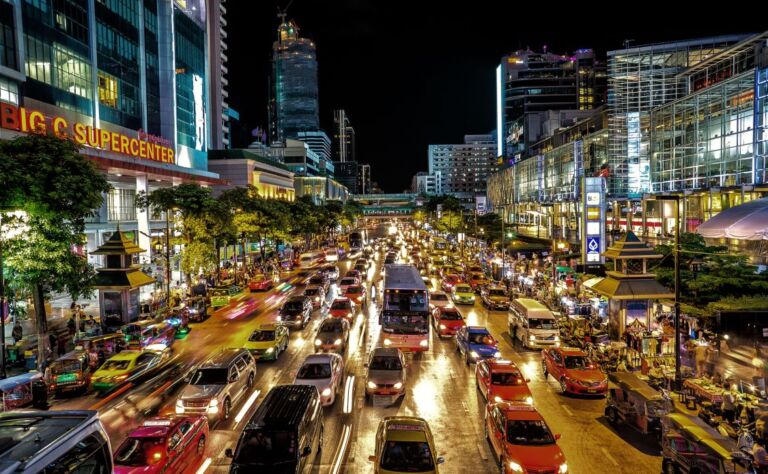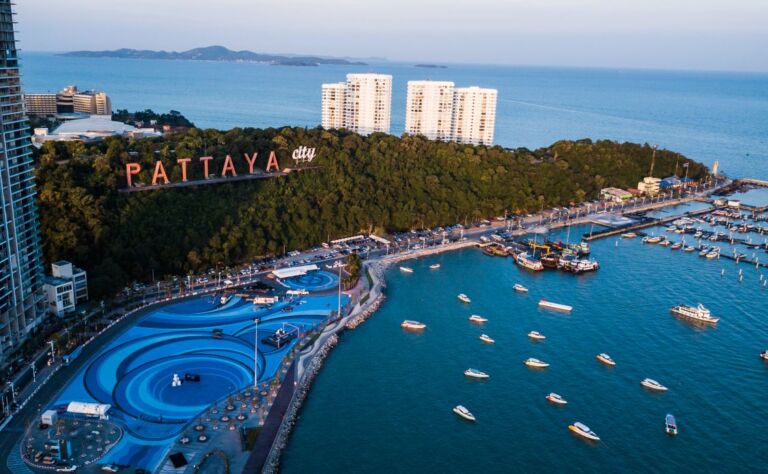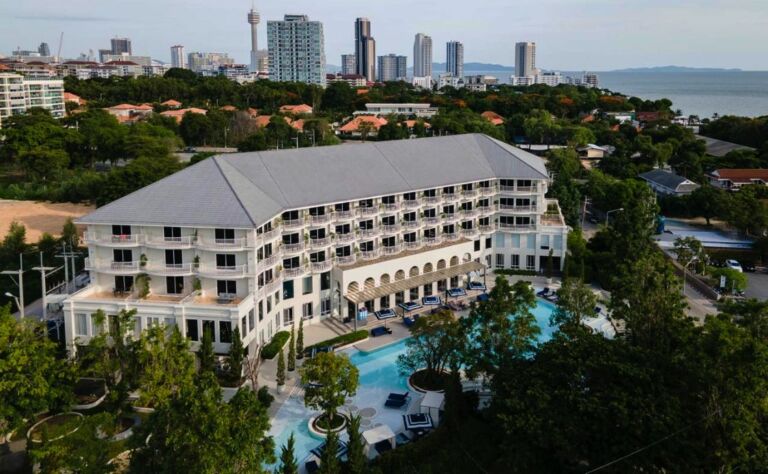Ultimate guide to Street Art in Bangkok +Map
Whether you’re wandering through Chinatown’s maze-like streets or exploring the hidden corners of the Ratchathewi District, Bangkok’s street art represents a variety of messages, from political proclamations to visual expressions of beauty.
This guide will help you discover the best spots to see street art, and offer handy tips to enhance your experience.
This page contains affiliate links. Please see our disclosure policy for more details.
A Brief History of Bangkok’s Urban Canvas
Street art in Bangkok took off towards the end of the 20th century. It was seen as a different way to express thoughts and challenge traditional ways of thinking. Initially, you could find it tucked away in hidden spots and overlooked side streets to avoid attention from the authorities.
Theses artworks were bold, quick, and knocked your socks off and very different from the usual, traditional Thai art forms.
Fast forward to the 2000s and Bangkok’s street art scene really started to take off. Artists moved from hidden backstreets to prominent places as people’s attitudes about street art started to shift from disapproval to interest.
In the mid-2000s, the government began to see the value of street art as a way of attracting tourists and showcasing local culture. They began to back and finance these urban artists.
This culminated in the city’s first street art festival, BukRuk, held in 2013. The event gave a platform to local and international artists alike, marking a major turning point and signifying the official acceptance of street art as a part of Bangkok’s cultural landscape.
In 2016, BUKRUK Urban Arts Festival brought in artists from around the world for a 10-day celebration of public wall paintings, art exhibitions, artist talks, animation and music. Surprisingly, much of this work is still visible today in 2025.
Where to find the Best Street Art in Bangkok
It’s time to grab your rabbit card, lace up your walking shoes and explore some of the best Bangkok neighbourhoods for finding street art.
If you are on a short visit, these first few places are well known for street art and easily reached by first-time visitors to Bangkok.
Taled Noi Street Art
This area has made it into pretty much every guide book and blog over the last two years. It’s one of my favourite places to stroll, but its current fame has made it quite crowded. As long as you arrive early or late in the day, it’s not too bad.
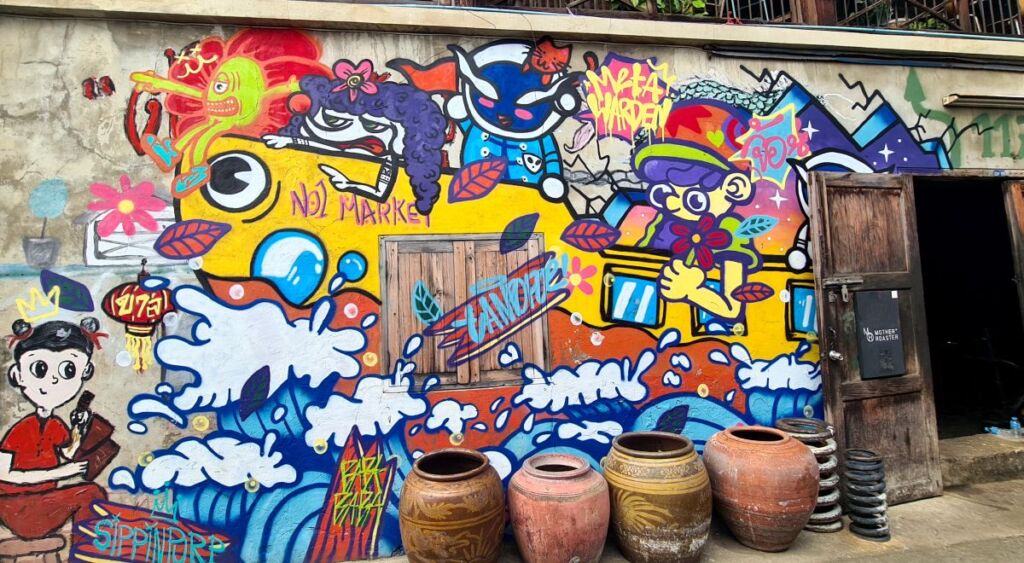
There is a great range of art on the walls here, from bright commercial looking murals to photography displays and works depicting life in these streets (or sois) from years past.
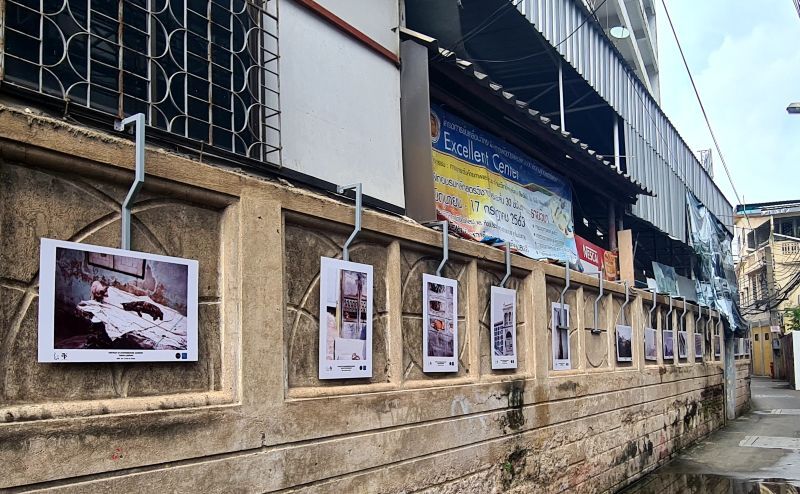
Saphin Taskin
This is one of the easiest places in Bangkok to see a bit of local art. The walls right beside the Saphin Taskin BTS stop are lined with large-scale murals. If you are planning to take a Chao Praya Ferry to head to Wat Arun or ICONSIAM, then it’s likely you will find yourself here at least once
Sathon Canal Art
If you are keen and up for a bit more of a walk, about 10 minutes from Saphin Taskin hidden on the other side of the main road is an art project that was a collaboration between artists and the local community.
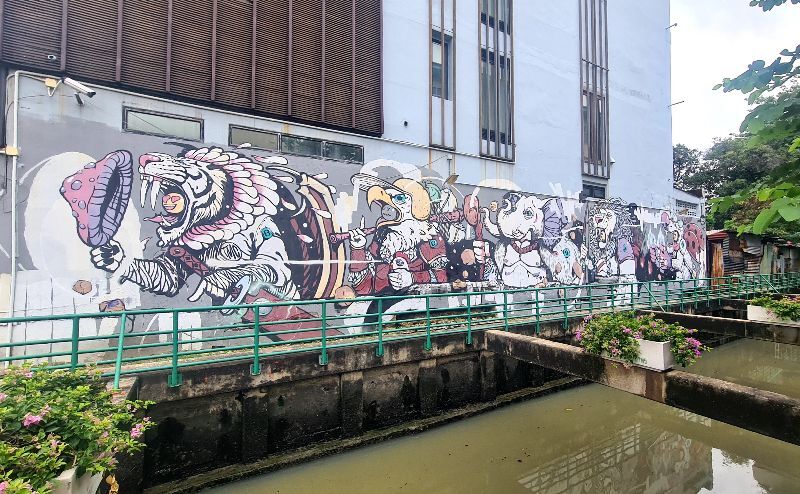
Bangrak
It’s impossible to discuss Bangkok’s street art without mentioning Charoenkrung Road in Bangrak. This is the city’s oldest paved road, and the surrounding area has reinvented itself as an intriguing blend of past and future, where historic architecture provides the backdrop for cutting-edge urban artistry.
As you walk around, look out for the big wall paintings and detailed graffiti, each one shows the unique style of both local and international artists.

Don’t miss Soi CharoenKrung 28. You’ll find loads of amazing wall art here, all done by local artists. Their work celebrates Bangkok’s rich heritage and culture.
If the heat is starting to get to you, there are a lot of galleries in this area. Warehouse 30 on Charoen Krung 30 houses a number of spaces showcasing the work of local artists. Much of the work is urban or contemporary in style. We always enjoy popping in to see what’s new.
Chinatown (Yaowarat)
The twists and turns of Bangkok’s Chinatown, also known as Yaowarat, is home to some breathtaking street art, both huge colourful walls you can’t miss and small pieces you will find in the back lanes of the bustling markets.
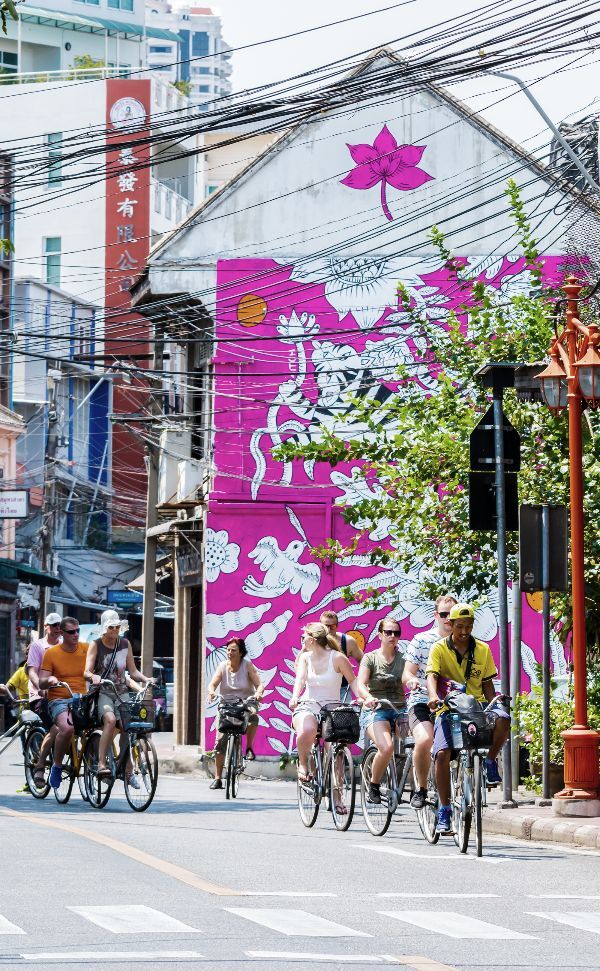
One of the most famous is this stunning pink wall by the Romanian artist Aitch. It was created as part of the Bukruk Festival. Don’t bother looking for it. Sadly it’s gone. It was at the top of Song Wat Road, near Wat Pathum Khongkah. I saw some work being done there this week so who knows what is next.
Just a little further along Song Wat Road, is a huge mural by the international artist ROA. Featuring two elephants, it was created to keep the welfare of these precious and endangered animals at front of mind.
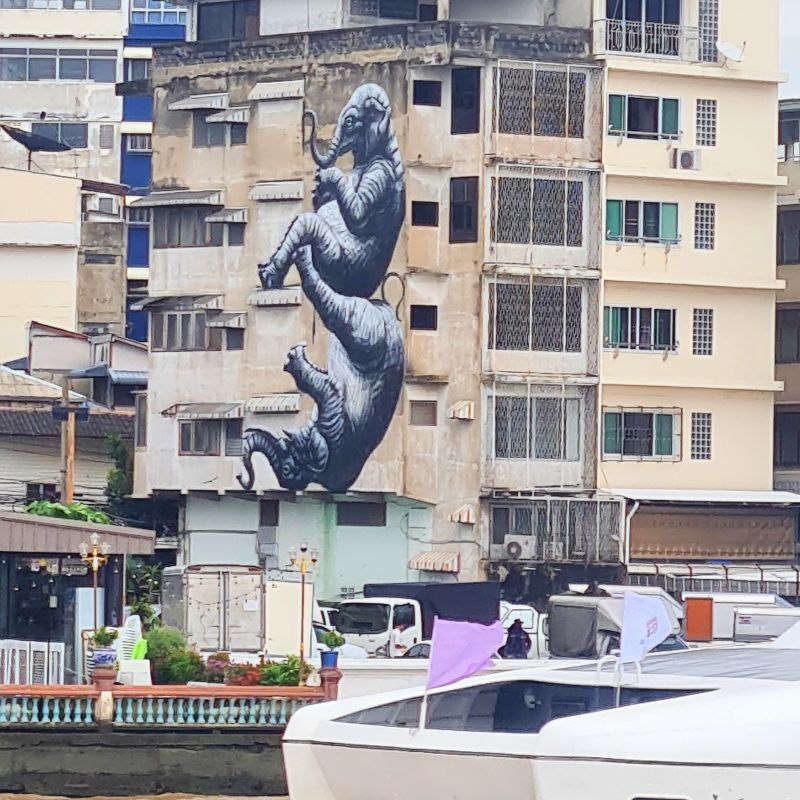
You can view the elephant mural from a Chao Praya River ferry if you are short of time.
While you are in the area, only five minutes from Sam Yot MRT Station, you’ll find Khlong Ong Ang (aka the Ong Ang Canal) an area lined with murals and restaurants.
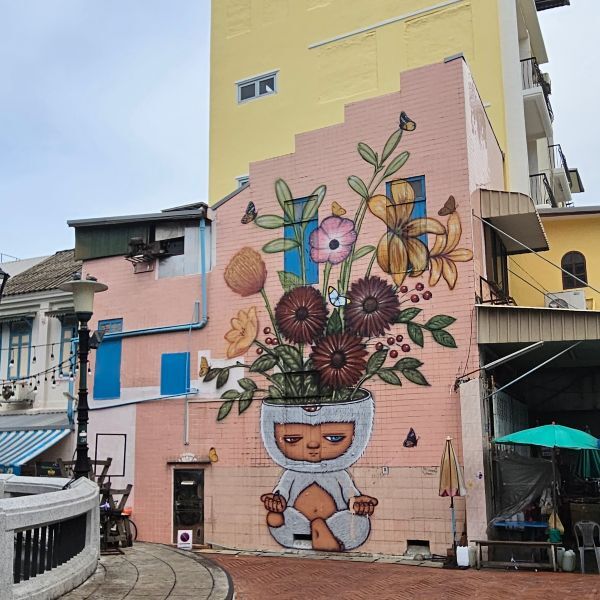
Ong Ang Canal underwent redevelopment a few years ago and the walls feature the work of some of Bangkok’s best street artists. Most of the work is between Damrong Sathit Bridge and Saphan Han Bridge.
Khao San Road Area
Known as the backpacker’s hub, Khao San Road area also serves as a canvas for local and international artists. Leading this vivid spectrum of murals is Alex Face. His iconic three-eyed child character, Mardi, a poignant image encapsulating the innocence and uncertainty of Bangkok’s future generations, is clearly visible in a small alley near Rambuttri road.
Look out for work by Mue Bon, who is known for his cartoon bird. While the colourful works are often described as cute, the topics he addresses range from wealth inequality to media freedom.
As you wander, you’ll also spot the bright, imaginative creatures that are the work of popular local artist Lolay.
The vibrant Khao San neighbourhood also features many works by Spanish artists Artz and Sabek thanks to the extension of the Bangkok Art Biennale into this area in previous years.
Ratchatewi
Next, take a step into the Ratchatewi district where a vibrant mix of works by both local and international artists awaits. Take the BTS to Ratchatewi Station to begin your hunt.
Perhaps better known for its gigantic shopping centres and the budget fashion magnets of Platinum Mall and Pratunam Market, this area may not be the first place that comes to mind when you think about art, trust us, Ratchathewi is a popular destination for those who love street art.
Walk the streets of Ratchathewi, and you’ll encounter various forms of street art including pieces by well-known artists such as Lolay and AITO, as well as inspiring works by emerging talents.
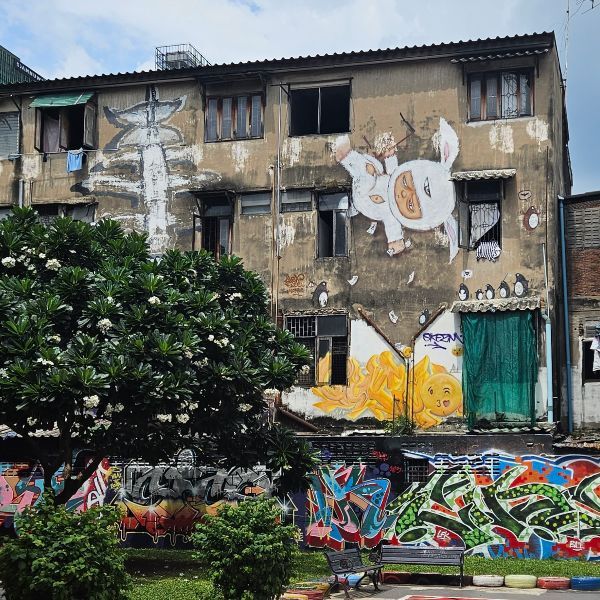
Ratchathewi is also home to Chalermla Park, commonly known as Graffiti Park. Chalermla Park was given over to art during of the city’s first street art festival back in 2013. You will find work from Alex Face, a huge range of colourful tags and even the odd political statement.
Saen Saep Canal
The walls of the Saen Saep Canal are a magnet for emerging bangkok street artists. There are seemingly more tags than murals here, although there are some larger scale works every so often, including some by the more well know names of the Bangkok urban art scene.
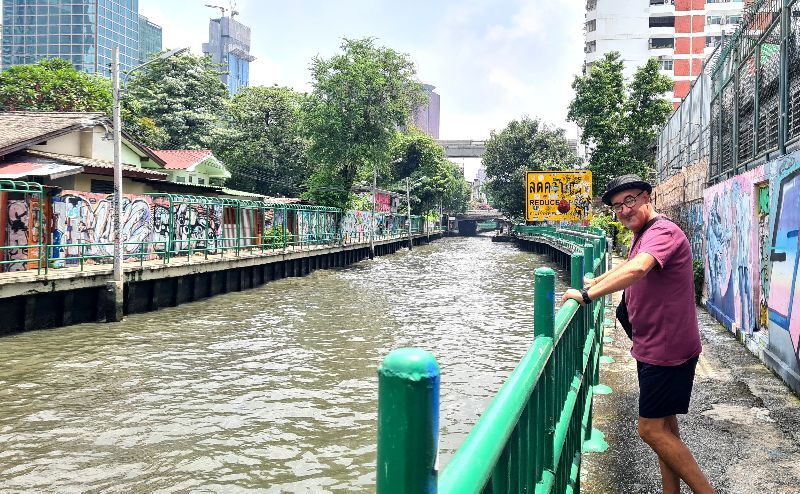
The art covers quite a lot of the canal. This is a good way to travel between the work of Ratchathewi and the Bangkok Arts and Cultural Center at Siam Square. The walk from the canal to the main road at this point is not too far either.
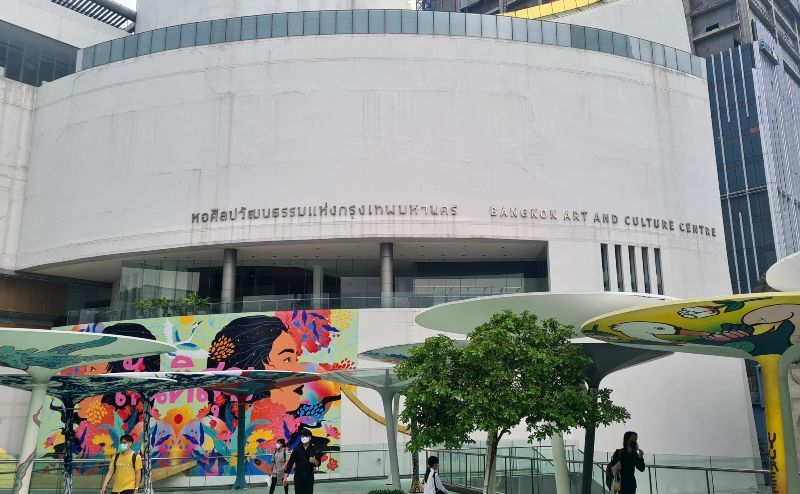
Ride one of the river boats, an experience in itself, or you can walk. It depending on the heat and your energy levels. You could travel the full length of the canal as a fun day out popping off at various stops to explore the surrounding streets.
Emerging Street art locations in Bangkok
These are possibly for the more intrepid traveller, the hard core art lover or those on a longer visit as they will take a bit more work to get to.
ChokChai 4 Road in Lad Prao – This area has a stop on the new Yellow BTS Line. The artwork here is spread across an abandoned market and how long it will be here before the site is redeveloped is anyone’s guess. You will find pieces by Alex Face and others.
Time your visit for best results
I often go street art hunting early in the morning when I travel, but things are a little different in Bangkok. While the weather is perfect at 7am to be walking, the usually hot Bangkok streets many laneways and sois are full of street food vendors and their stalls and vehicles can obstruct the art.
Photographers might prefer the late afternoon to grab the perfect unobstructed shot. Having said that, I love the early morning chaos and smells as breakfast is served to passing workers.
Self Guided Bangkok street art map
We have created a map to allow you to discover some murals we love. We have not included everything as we like the idea of making your own discoveries but the best know works and streets are listed here.
Are there guided tours for exploring street art in Bangkok?
There are a couple of walking tours of Bangkok on Get Your Guide, but none of them stand out as being comprehensive street art tours. If you are short of time, then a tour of Taled Noi or Chinatown will allow you to see some work in a short time. However, for us, one delight of street art is discovering it randomly, although a little less randomly these days thanks to Instagram and articles like this 😉
What types of street art can be found in Bangkok?
Bangkok’s street art scene is wonderfully varied, showcasing a mix of Thai tradition and global inspirations for those who appreciate art.
- Murals: One of the most prevalent types of street art in Bangkok is the mural. Ranging from larger-than-life portrayals of revered Thai figures to intricate depictions of daily life, these murals tell the story of Bangkok’s evolution through time.
- Stencils: You’ll find clever use of stencils across Bangkok’s street art scene. It’s a quick and low-risk method favoured by many local artists. Its distinctive aesthetic adds a pop-art dimension to the city’s scenery, often used to make social and political commentaries.
- Stickers and posters: Less permanent than the conventional murals, yet interesting in their own right, are the boom of stickers and posters. Its transient nature allows new artists to share their visions and messages with the public, encouraging engaging discussion.
- Graffiti and Tags: Reflecting the origins of street art, Bangkok’s landscape features a vibrant graffiti and tag scene. You’ll find back alleys and the sides of canals adorned with graffiti tags.
Bangkok’s mixture of street art styles makes the city lively and inclusive. It fosters conversation and unites the community.
Are there any rules or regulations regarding street art in Bangkok?
If you are keen to add your own work to the walls of Bangkok, you might be wondering what the rules are. Well, the answer is a little complex. While graffiti is technically illegal in Thailand and can incur penalties, street art is often seen in a different light. As long as they get the property owner’s okay, artists can freely showcase their talent on the city walls.
Yet, not all street art in Bangkok is risk-free. Artists can be fined or even imprisoned for creating art on public or government property without consent.
Indeed, despite regulations, Bangkok’s street art scene is flourishing, providing a colourful display of creativity for anyone willing to discover it. Keep in mind, though, it’s best to create or appreciate this city-wide canvas in a legal and respectful way, to avoid upsetting locals or facing potential fines.
How to find the latest street art in Bangkok?
You may wonder, how do you can stay up to date with the latest street art in Bangkok? Lucky for you, there are a few tried-and-true ways to keep your finger on the pulse of the Bangkok art scene, even if you don’t live there.
The easiest method for finding new murals is to head to social media. Many street artists and art enthusiasts share their discoveries on Instagram and TikTok.
Follow hashtags such as #BangkokStreetArt and #StreetArtBangkok, and you’ll constantly have fresh murals and expressive art pieces appearing on your feed.
Reach out to local art communities too. Search for local art groups, attend their gatherings, and make new connections.
Fig Lobby – a top choice for art lovers in Bangkok
One place in Bangkok you might like to investigate is The Fig Lobby in Khlong Toei, which is both a hotel and a gathering place for the arts community.
The Fig Lobby is both a hotel and a place to create art. It’s a wonderful place to stay if you want to immerse yourself in Bangkok’s creative side.
The rooms are large and bright and filled with colour. The property itself offers a restaurant, rooftop bar, a spa, cycling studio and an art space.
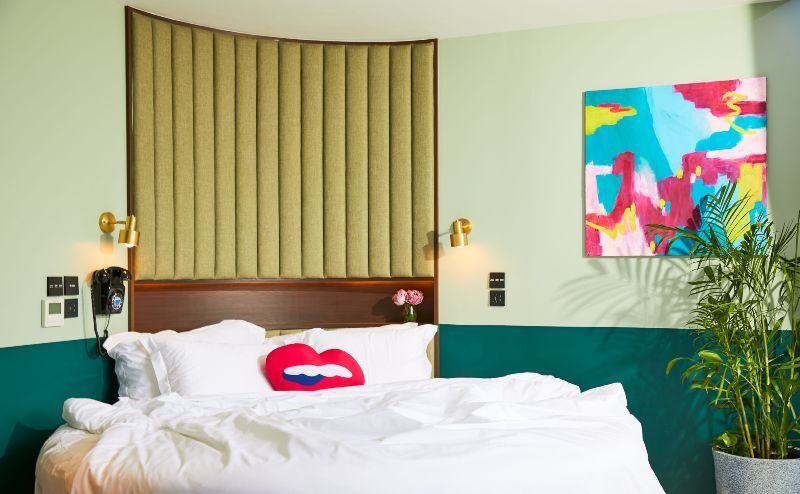
Linked Art on the second floor is home to a vibrant, artistic community and guests who decide to stay a month or longer can also access the 168 Community Living.
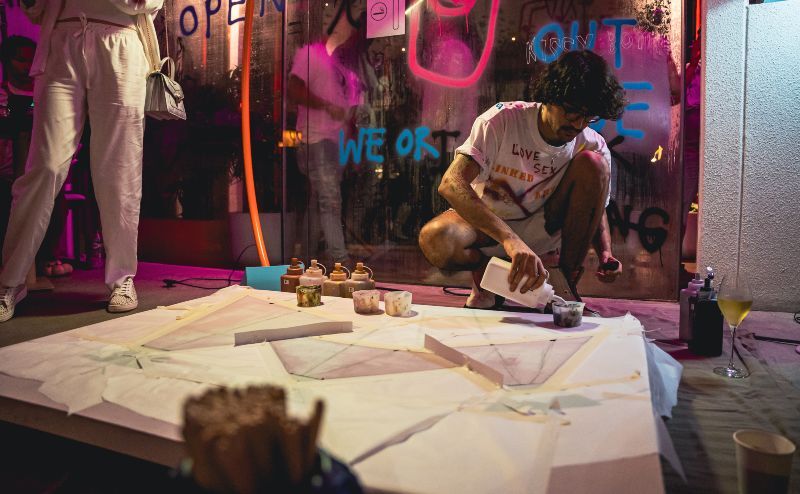
Bangkok’s street art is constantly changing. So while the murals we share above are here now, they may not be when you visit, but if they are gone, I am sure there will be something interesting in their place or right nearby.
Learn more about Bangkok’s best know street artists before you head out. This will help you identify their work.
We hope this guide has inspired you to lace up your walking shoes, grab your rabbit card and hit the streets of Bangkok to hunt down the city’s artistic treasures.
